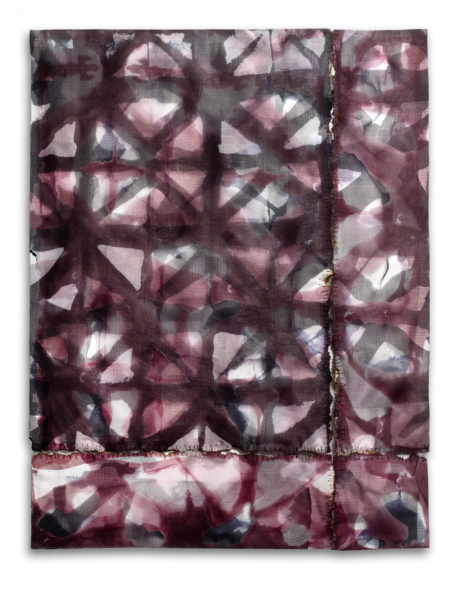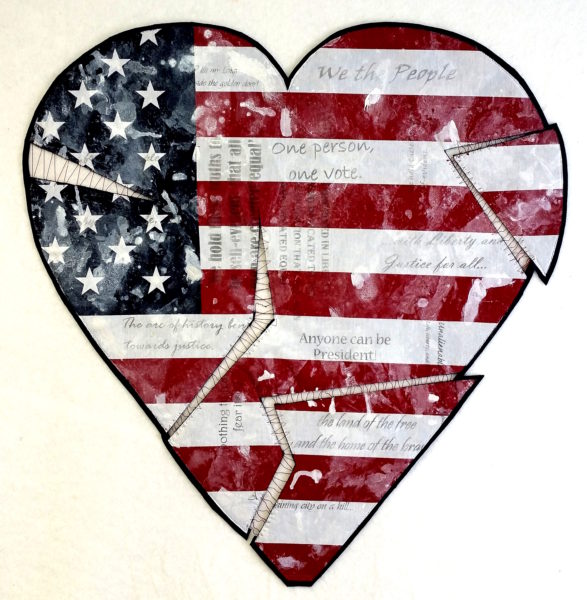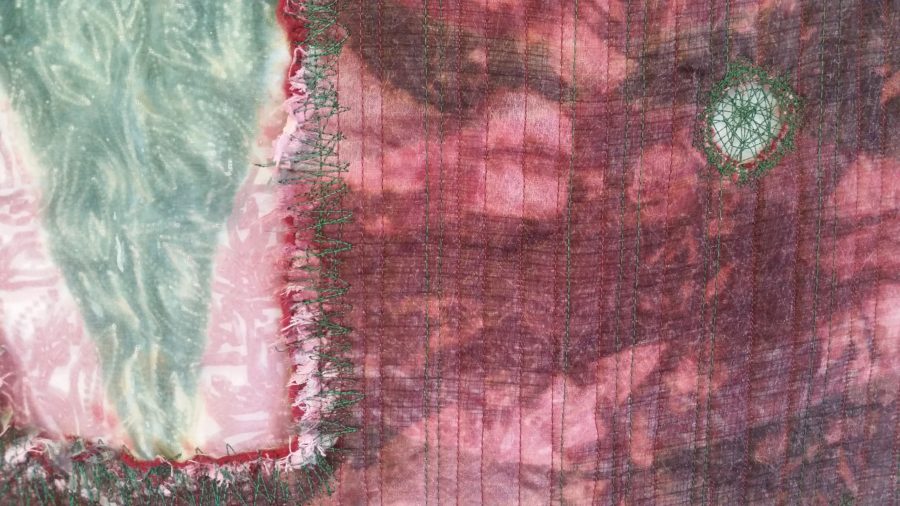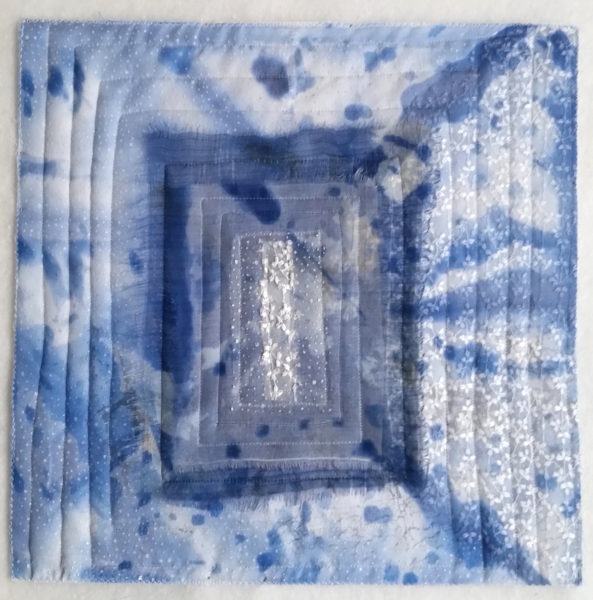New Work: Back to ‘Mending’
Yet another new work inspired by Hazel Hall’s poem, “Mending.” Full text of the poem is here. Written about 100 years ago (Hall died in 1924), it is the gift that keeps on giving! Hall describes a mundane household chore as a subversive act, ‘a little travesty on life.’ It just seems to fit our zeitgeist, doesn’t it?
This piece combines several of the techniques I have used in the last year: layered sheers, cutting, burning, and visible mending. It feels radical to me, but still beautiful. Similar to Haiku III, but dimensional instead of fused flat. Best of all, I have ideas for several more pieces in this style.
Stay tuned.


Materials
Fabric, dyes, fusible web.
Techniques
Fusing, dyeing, burning, machine stitch, cut work.
photo credit: Jack Kulawik
















